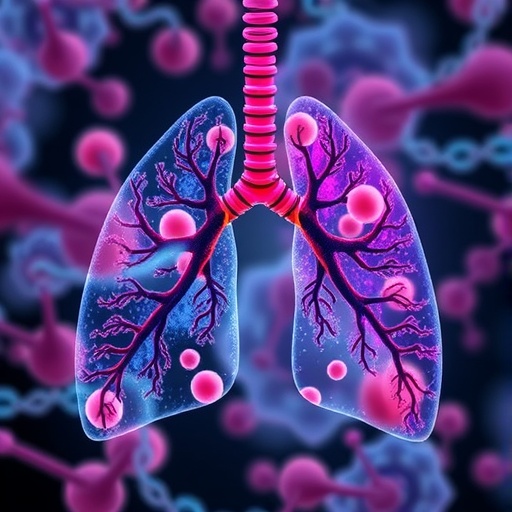The human respiratory microbiome has garnered significant attention in recent years, offering insights into how microbial communities impact respiratory health and disease. In a groundbreaking study led by Michel et al., published in BMC Genomics, the researchers delved deep into the intricate relationship between RNA extraction methods and their repercussions on respiratory microbiome analysis utilizing third-generation sequencing technologies. This work elucidates the critical role that methodological choices play in shaping our understanding of the microbial inhabitants of the respiratory tract and their potential implications for health and disease.
The respiratory microbiome consists of a complex tapestry of microorganisms, including bacteria, viruses, fungi, and archaea. These microbial members are not mere passengers; they actively participate in maintaining respiratory health and can contribute to various diseases when dysbiosis occurs. By investigating the RNA extraction process, the authors underline a pivotal aspect that can significantly influence the outcome of microbiome studies and the subsequent interpretations of data.
Third-generation sequencing technologies provide an advanced route for microbial analysis. Unlike earlier sequencing methods that focused primarily on DNA, these innovative technologies can characterize a more comprehensive view of microbial communities by analyzing RNA, which offers insights into active microbial processes and their responses to environmental factors. However, the success of these fascinating techniques hinges on the quality and methodology of RNA extraction. The authors meticulously examined various RNA extraction protocols.
In their study, Michel and colleagues employed a systematic approach, comparing different RNA extraction methods to assess their efficacy in recovering a diverse array of respiratory microbiota. By meticulously evaluating parameters such as yield, purity, and the resultant cDNA libraries, the researchers were able to identify the strengths and weaknesses of each approach, illustrating that not all RNA extraction methods are created equal. This nuanced understanding has critical implications for researchers in the field, emphasizing the importance of selecting an appropriate extraction method to ensure accurate and representative microbiome profiles.
The authors also explored how variations in RNA extraction can lead to biases in analyzing the microbiome composition. Such biases may mask the presence of key microbial species or inflate the representation of others—potentially skewing results toward misleading conclusions. This highlights the necessity for standardization in microbiome research methodologies. The study advocates for a careful and tailored selection of RNA extraction protocols that align with the specific goals of respiratory microbiome investigations.
One of the standout findings of the research was the identification of unique RNA extraction methods that excel in recovering particular subgroups of microorganisms. This specificity underscores the potential for customized extraction protocols to facilitate targeted microbiome analyses, allowing researchers to zoom in on particular diseases or conditions associated with the respiratory tract. This flexibility can enable profound advancements in understanding how specific microbial communities may drive or hinder respiratory health.
An equally pivotal aspect discussed in the study revolves around the interpretations of microbial diversity and its functional implications. The application of RNA sequencing coupled with robust extraction methods promises to unlock new pathways for identifying the functional capabilities of respiratory microbial communities. By shedding light on the active genes, metabolic pathways, and interactions within the respiratory microbiome, researchers can begin to unravel the complexities surrounding microbial influences on respiratory diseases.
The implications of this research extend beyond the laboratory bench. Understanding the nuances of RNA extraction’s role in microbiome analysis can translate into clinical applications, where precise microbiome profiling may lead to better diagnostic tools and therapeutic strategies for respiratory conditions—all promising avenues for future investigation. The findings open up new dimensions for understanding how pathogens might exploit weaknesses in the respiratory microbiome.
As our grasp of the human respiratory microbiome deepens, it is becoming increasingly vital to integrate technological advances with methodological rigor. The fusion of third-generation sequencing technologies with meticulously chosen RNA extraction methods may pave the way for precision medicine approaches in respiratory health. This interplay of innovation and research will hopefully
Tags: active microbial processes in respiratory microbiomebacterial and viral interactions in respiratory tractdysbiosis in respiratory microbiomeenvironmental factors affecting respiratory microbiomefungi and archaea in respiratory healthimplications of RNA extraction on microbiome studiesinsights from BMC Genomics studymethodological choices in microbiome researchmicrobial communities in respiratory healthrespiratory microbiome analysisRNA extraction methodsthird-generation sequencing technologies





